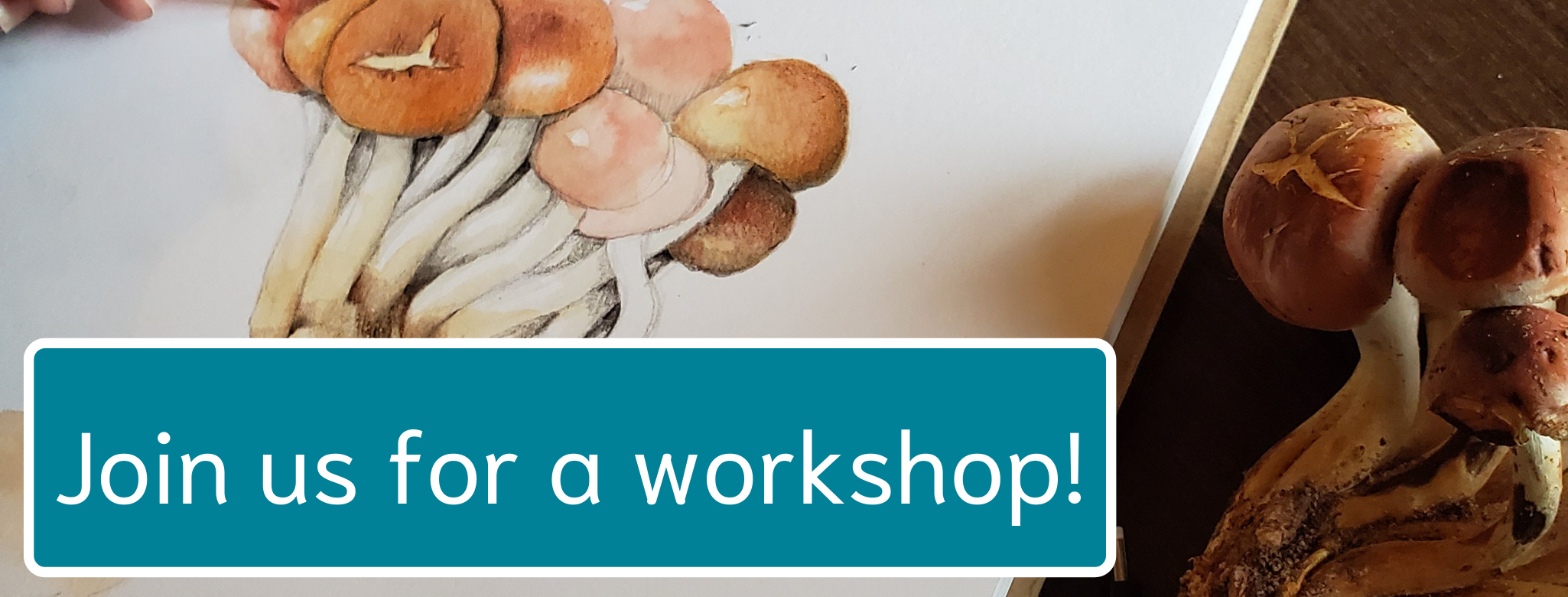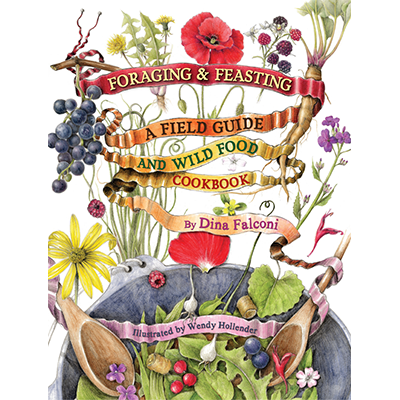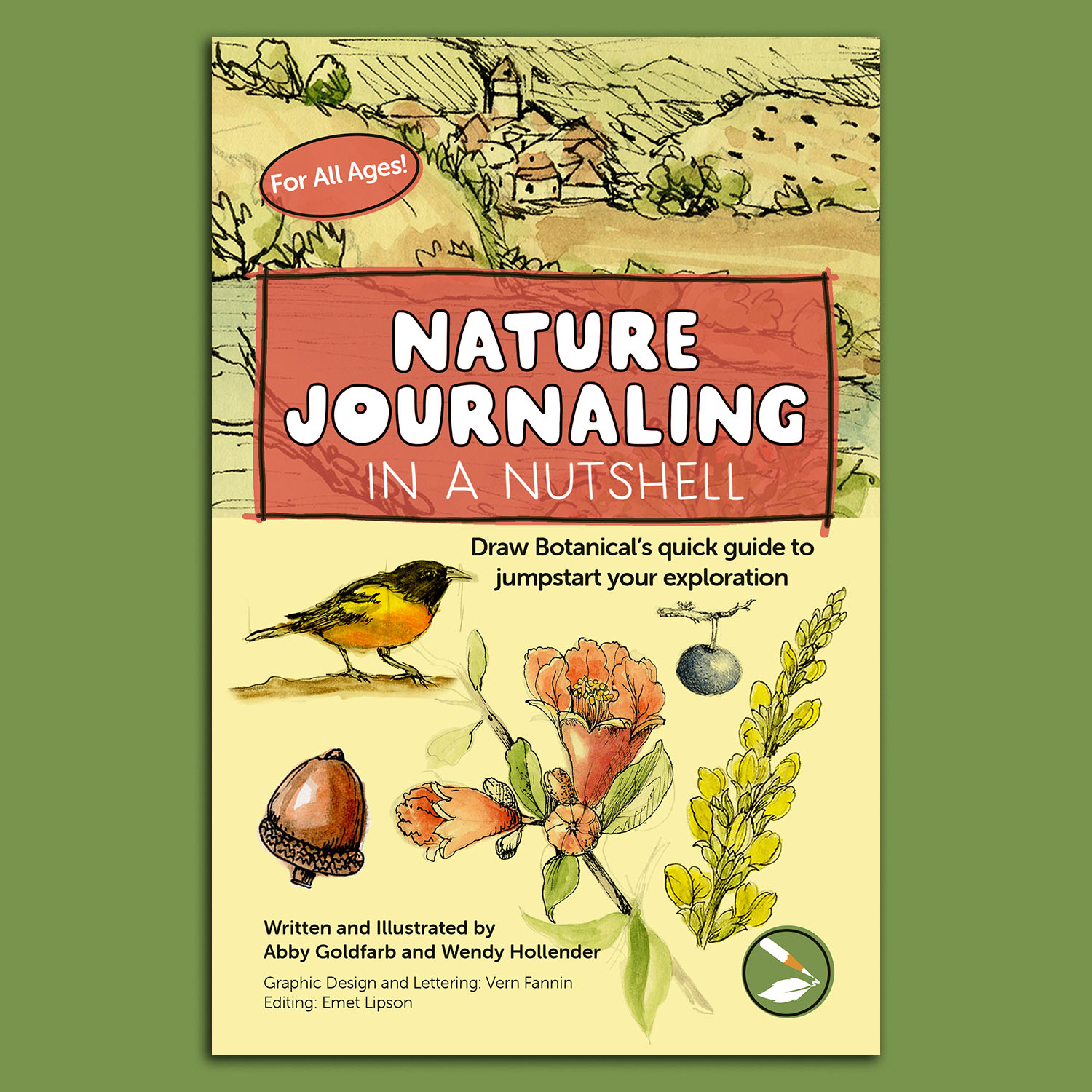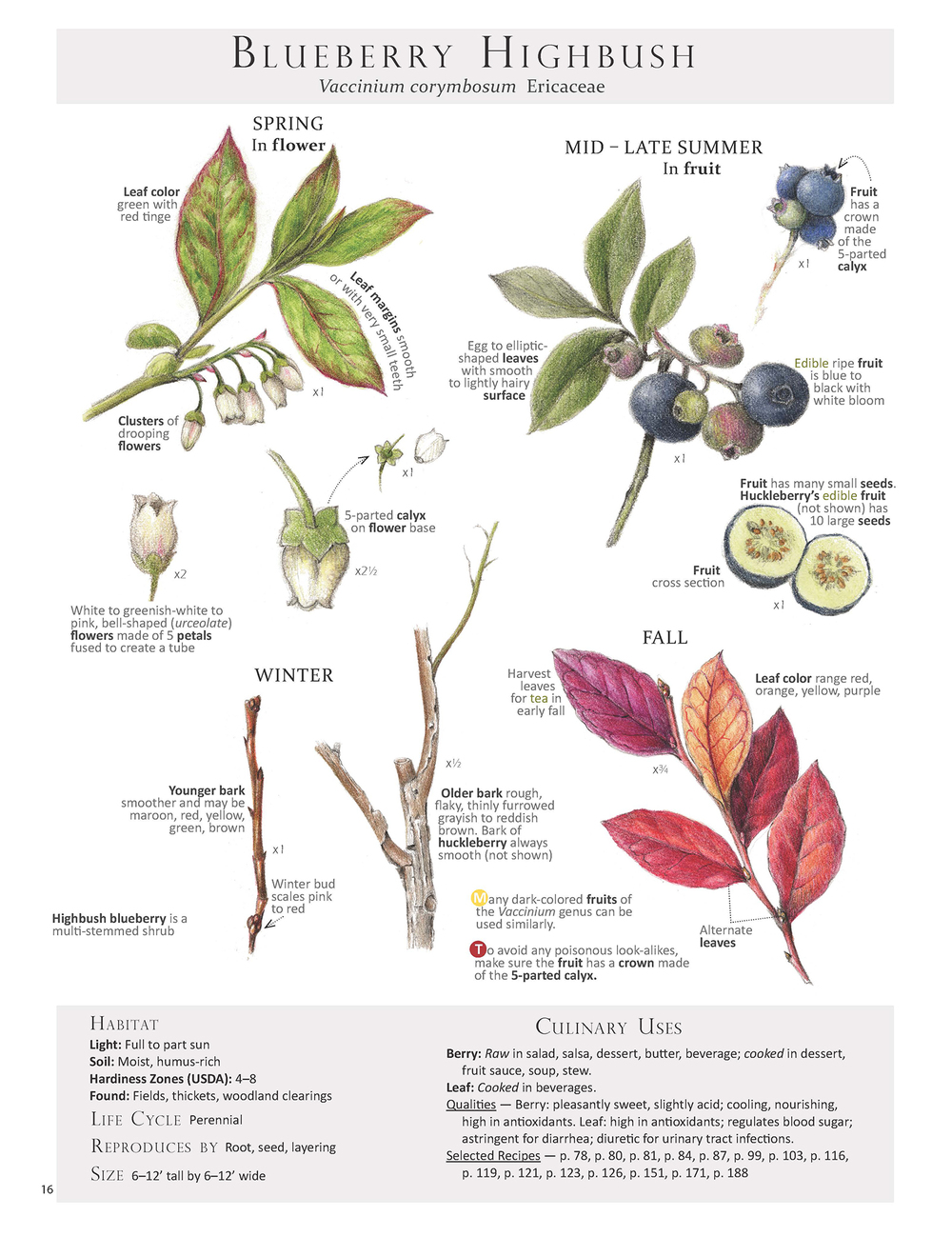
Foraging (also referred to as wildcrafting) is searching for wild plants or food in nature. Humans, like many animals, have been foraging since the beginning of their existence. The art of wildcrafting helps us to honor and celebrate food, nature, and each other.

It is a great time to explore mushrooms! Not so much for eating, but to start to learn about them and to draw them. Spoiler Alert: Mushrooms are FASCINATING.
Luke Sarrantonio (a brilliant, local fungi education, foraging, and cultivation consultant) has been guiding me to the best secret mushroom hideouts. Above is my first Mushrooms of New York plant family portrait, depicting all of the mushrooms we foraged from April to July last year. (Find Luke on Instagram @mycophilicorganism)
If you’re enchanted by the whimsical world of mushrooms, join our exploration into the art of drawing these fascinating fungi. Designed for artists of all skill levels, this workshop offers a playful and friendly environment where creativity flourishes. Click the image above or learn more and register here.

I think Dina Falconi, author of Foraging & Feasting, said it best, “To forage means to dance with the land.” (For even more foraging content, check out the Botanical Arts Press blog)
Here’s what you need to know before, during, and after you forage!
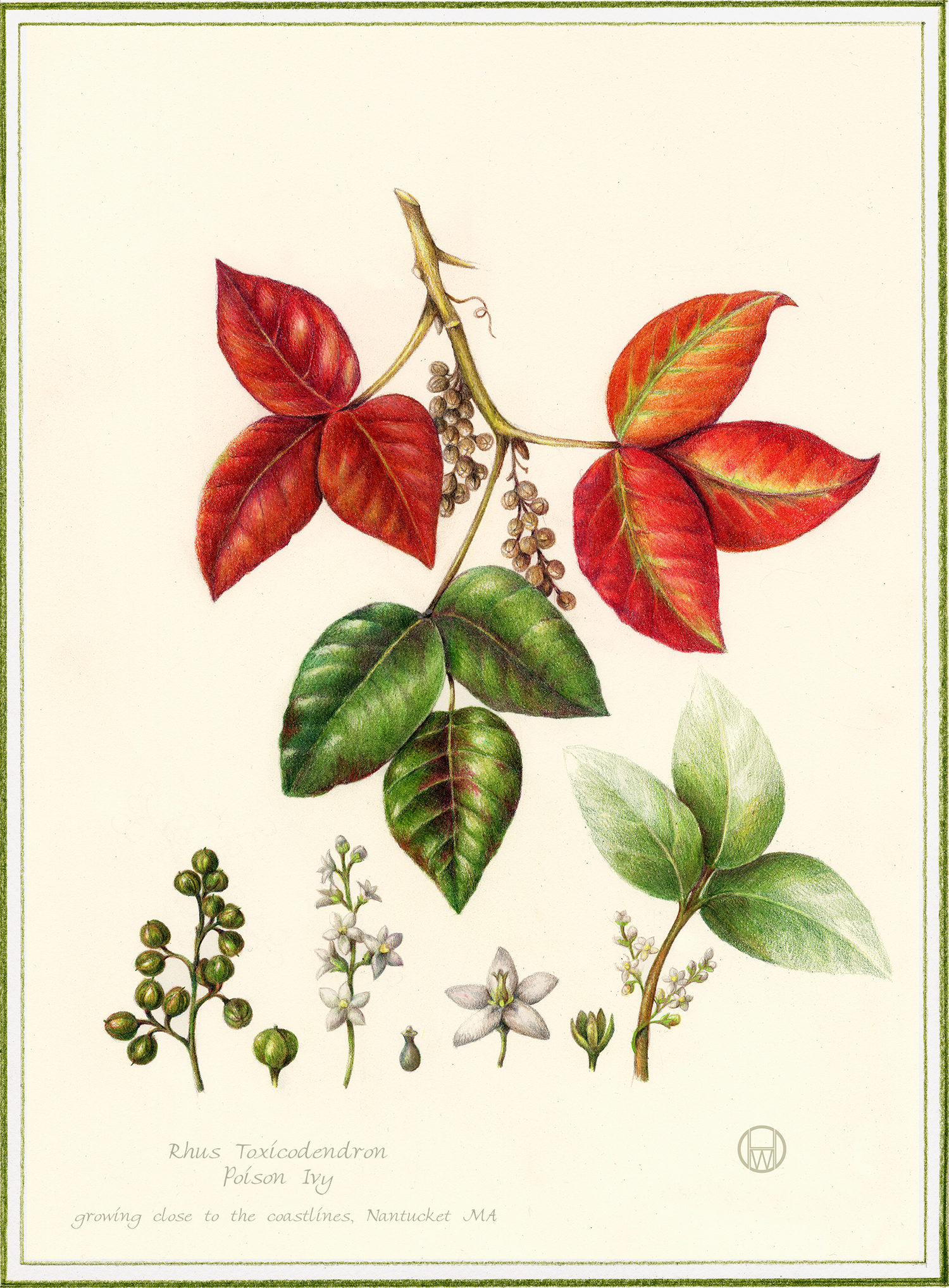
Before You Go:
+ Safety First!
Make sure you can identify poisonous, prickly, stinging, and spiky plants (like stinging nettle and poison ivy!) in your area so you can avoid touching them during your hunt. Foraging & Feasting is a great guide!
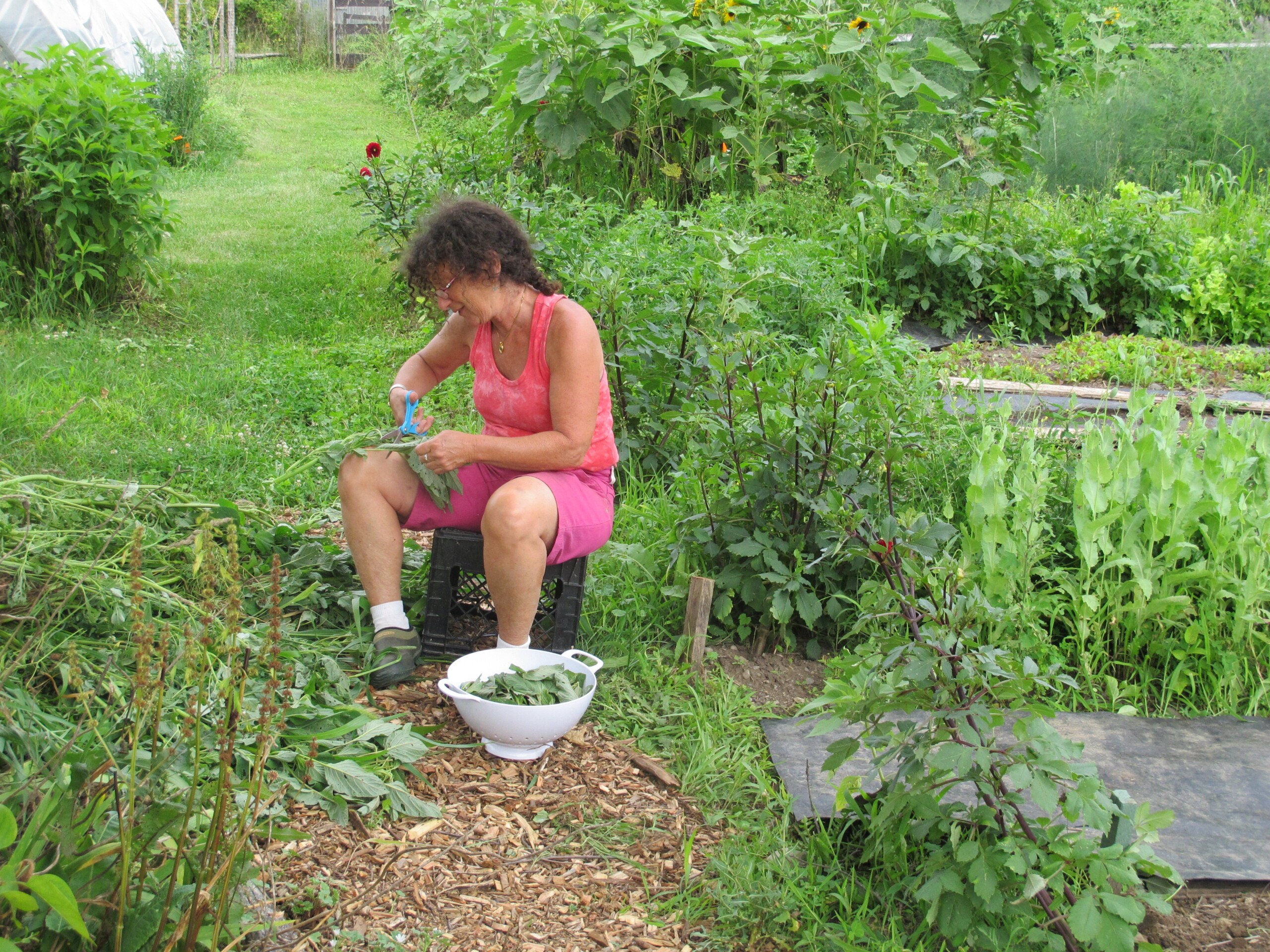
+ Prepare Yourself
Gather the following supplies to take with you:
– Scissors/Clippers
Use scissors or clippers to clip off parts of plants that you want to take home. Learn ways to collect parts from plants without damaging the entire plant, and respect the land where you forage.
-Baskets/Bags
Bring baskets or bags so you can carry home what you find in the field. If you’re mushroom hunting (which you should NOT do unless you’re with an adult who can identify them accurately), consider collecting them in a basket with holes so that the spores can spread throughout your walk.
– Nature Journaling Supplies
Foraging with a nature journal is so beneficial! (See the next section for why.) Wherever your adventures may lead, bring along some simple supplies, like a small set of watercolor pencils and a water brush. Use your favorite (easily portable) supplies.
– Protective Gloves, Long Sleeves, & Long Pants
It’s a good idea to wear long sleeves and even gloves while you forage, in case you encounter plants that your skin is sensitive to. Wear long pants, especially during tick season! (Pro tip: Tuck the bottom of your pants into your socks to help deter ticks.) Wearing long pants while you forage also helps protect your legs from prickly and stinging plants.
Depending on where you are going and how long you plan to be out, you may also want to bring a hat, sunscreen, and a full water bottle.
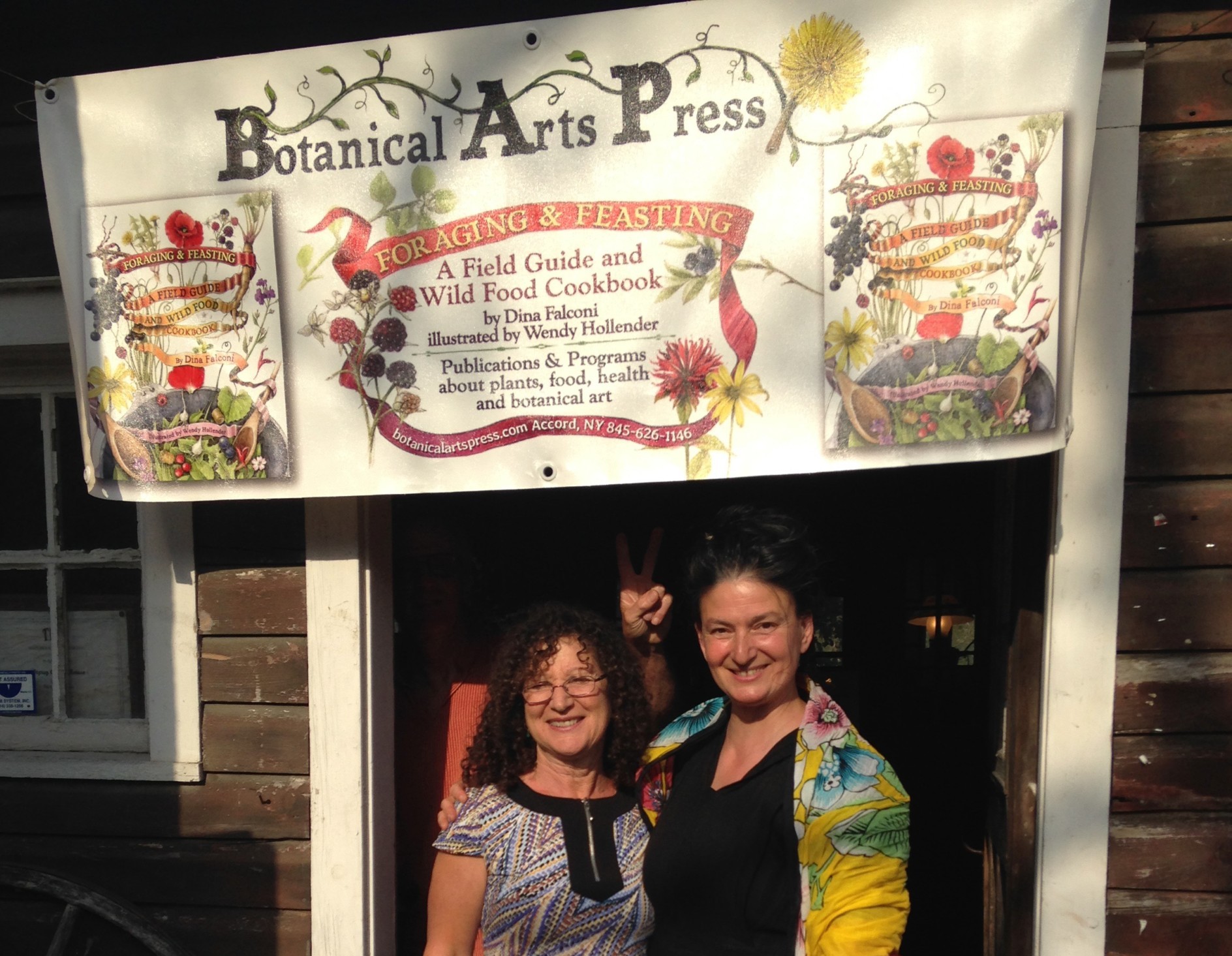
+ Ask for Permission
When you select a destination for foraging, make sure that you’re allowed to take things. Not all natural spaces allow public foraging! Never hunt without permission, especially at private properties and botanical gardens.
Foraging & Feasting has some great information about regenerative harvesting and how to ethically forage without harming the earth. Learn more about Foraging & Feasting here.
– Set Destination
It’s always fun to explore new plants in new places, but sometimes, I’ll revisit a specific area to look for new specimens from the same plants. For example, in winter I might look for a branch from a tree; in spring I might come back to that spot to look for its budding leaves; and in summer or fall I may find its fruit or nuts! I can combine all of those parts into one drawing to tell a descriptive story of that plant.
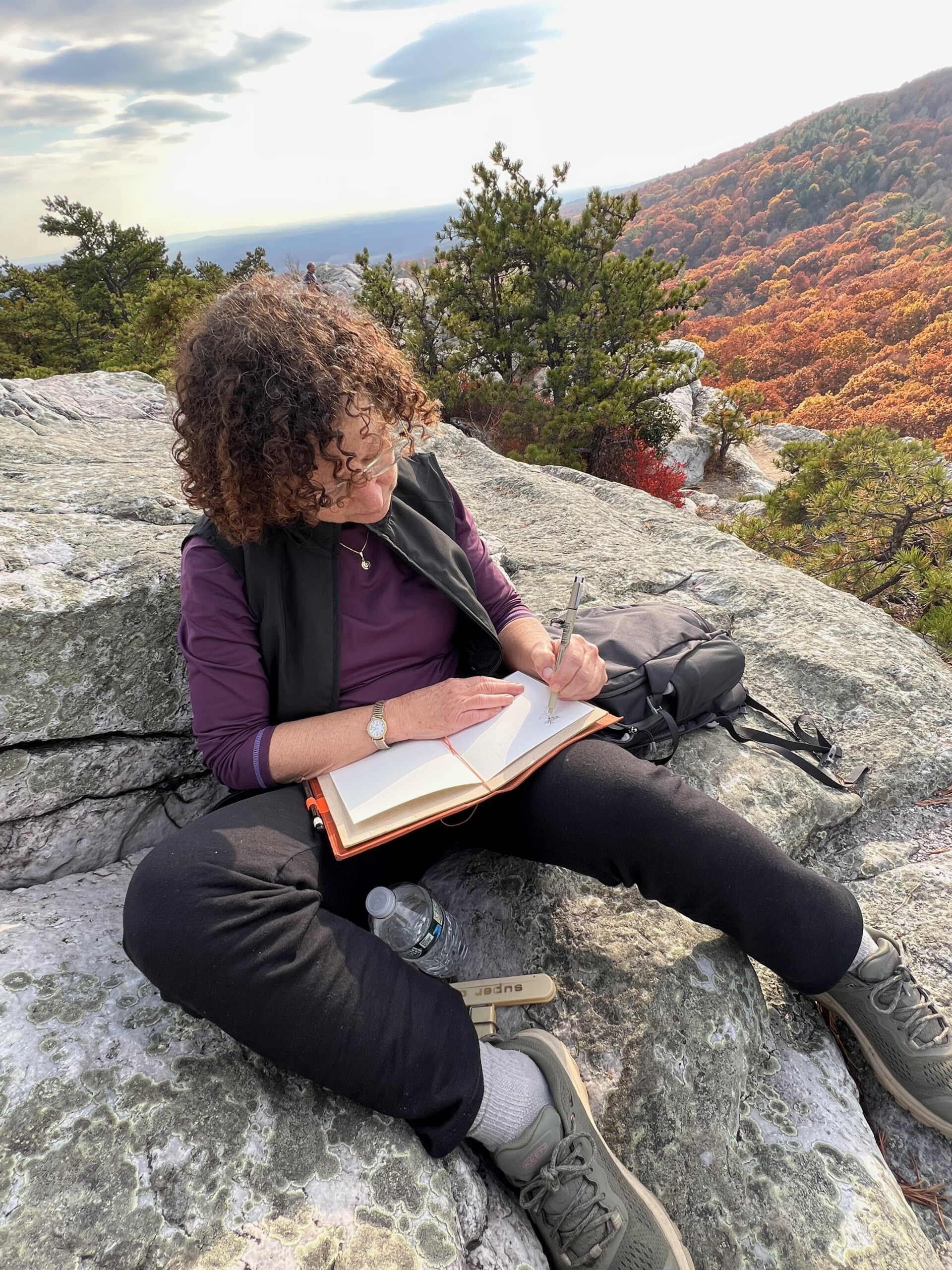
While You’re Out:
+ Collect
When I forage, I look for plant specimens to draw. My eyes comb the forest floor for leaves, mushrooms, flowers, branches, fruit, or nuts that have fallen from trees. I look for shapes or colors that attract me or might be fun to draw. I collect my findings in a basket to bring home with me.
Mushrooms are really fun to forage, but only eat them if you know about them and have had them verified by someone who knows mushrooms well. Drawing mushrooms is a great first step towards learning to identify them correctly!
You can also forage for food and medicine! Foraging & Feasting: A Field Guide and Wild Food Cookbook by Dina Falconi is a great resource. (Learn more here.)
– Respectful Harvesting Guidelines
When you are out collecting, be sure to honor these respectful harvesting guidelines. We are so grateful to the Kayaani Sisters Council (a group of Indigenous women across Alaska) and Kaasei Training & Consulting for this tremendous gift. They say it best:
“We hope that in following these guidelines we can maintain for the next seven generations the land on which we live and the foods and plants that sustain us. We also hope that local tribes, schools, communities, businesses and individuals will use these guidelines as a starting point for developing additional practices needed to sustain our lands and peoples. We believe that everything is connected. We are all interconnected with the plants, lands and each other. By further developing ways of protecting our resources, we are also healing ourselves and our lands.”
“By sharing the importance of maintaining and strengthening connections with our cultures, local plants and foods, and the importance of preserving our lands and resources, we believe it is an act of love and healing from the effects of colonization and violence against our peoples. We believe plants are our teachers. By working together to learn about them, preserve them, and respect them in the ways we go about gathering and harvesting, we… are creating a better world and learning how to honor one another.”
“Our goal is that these guidelines encourage you to engage with your own local and cultural plant traditions. We believe that precious knowledge, wisdom and medicine exist within each of us and all around us. Our gift of these guidelines is meant to encourage thoughtful discussion, honesty and hard work to help solve the issues of inequity and develop more sustainable ways to preserve and care for our resources.”
Find their Respectful Harvesting Guidelines here.
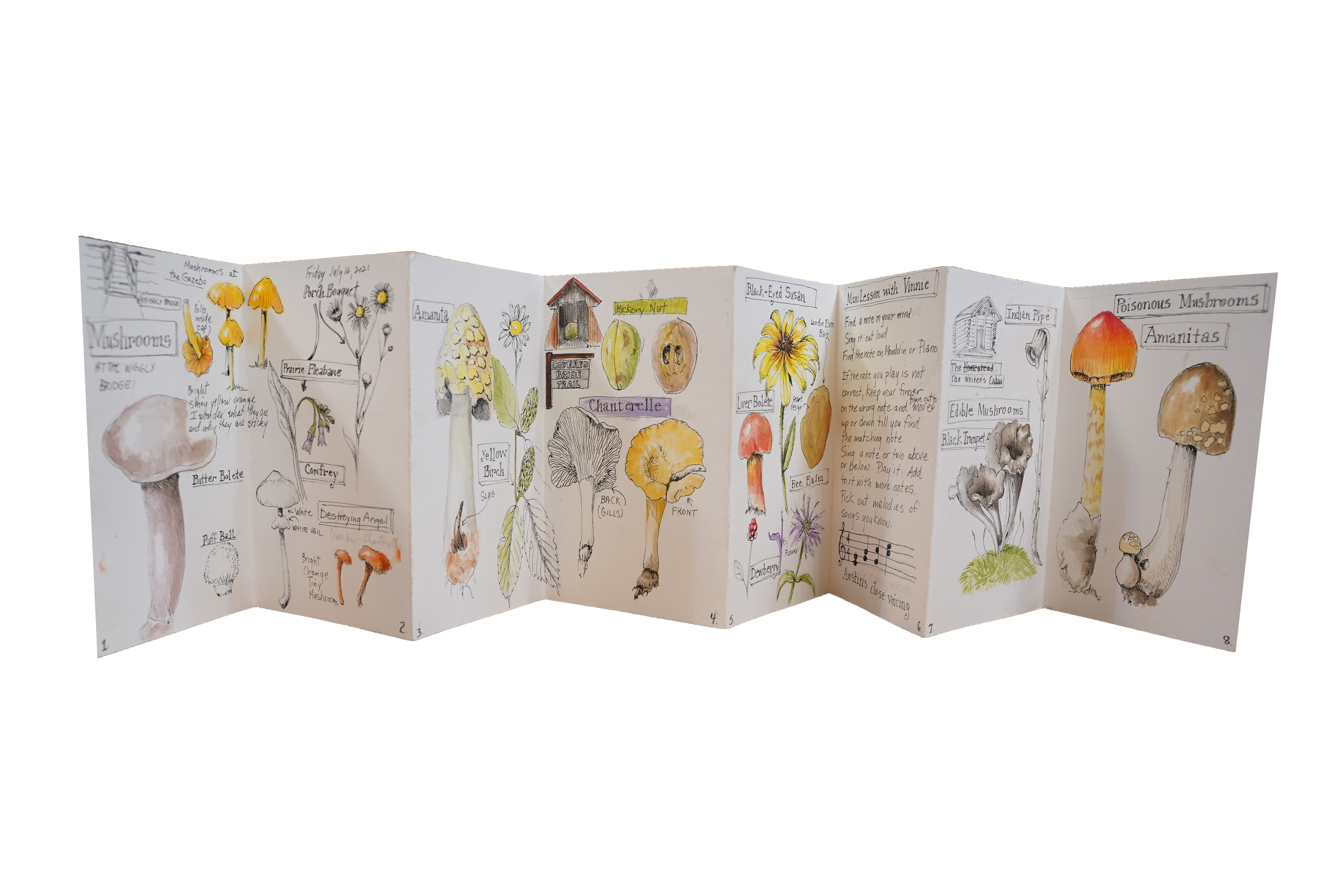
+ Nature Journal
Try this free nature journaling exercise to get started! You can jumpstart your exploration with our quick guide – Nature Journaling in a Nutshell (printed or as a PDF!).
– Calming & Fun
Your nature journal is a love letter to the universe. Like a meditation on nature, this practice is calming. Nature journaling can create feelings of reverence and wonder towards nature as well as gratitude for our experience of the world in all its magnificence, life, and beauty.
When you begin a conversation with your new plant friend, what do you notice instantly? What makes you go “woah!”? Which parts do you have questions about? Consider jotting your musings on the page to revisit later.
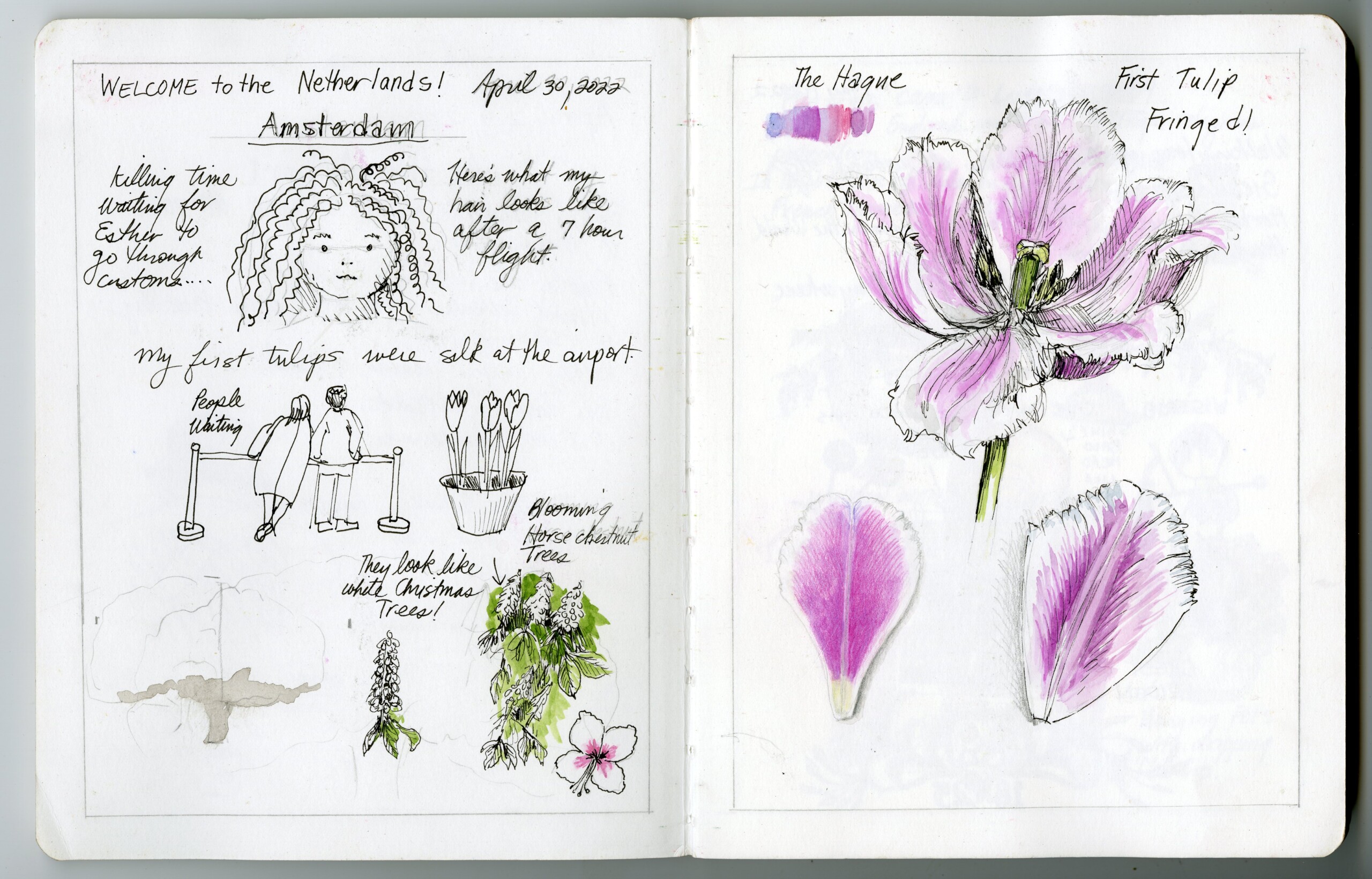
– Keepsake/Memento
Your journal can also become a meaningful record full of loving reflections and joyful memories of time spent in various natural places. The goal of this practice is not to make amazing art (which we are sure you will!), but to create something that is totally unique, completely you, and captures an experience that only you can be having in this specific place and time.
– Scientific & Informative
Your nature journal can also be more scientific and focus on information about the plant. Does the plant grow in the sun or shade? Are there other plants nearby? Do you notice any insects or pollinators?
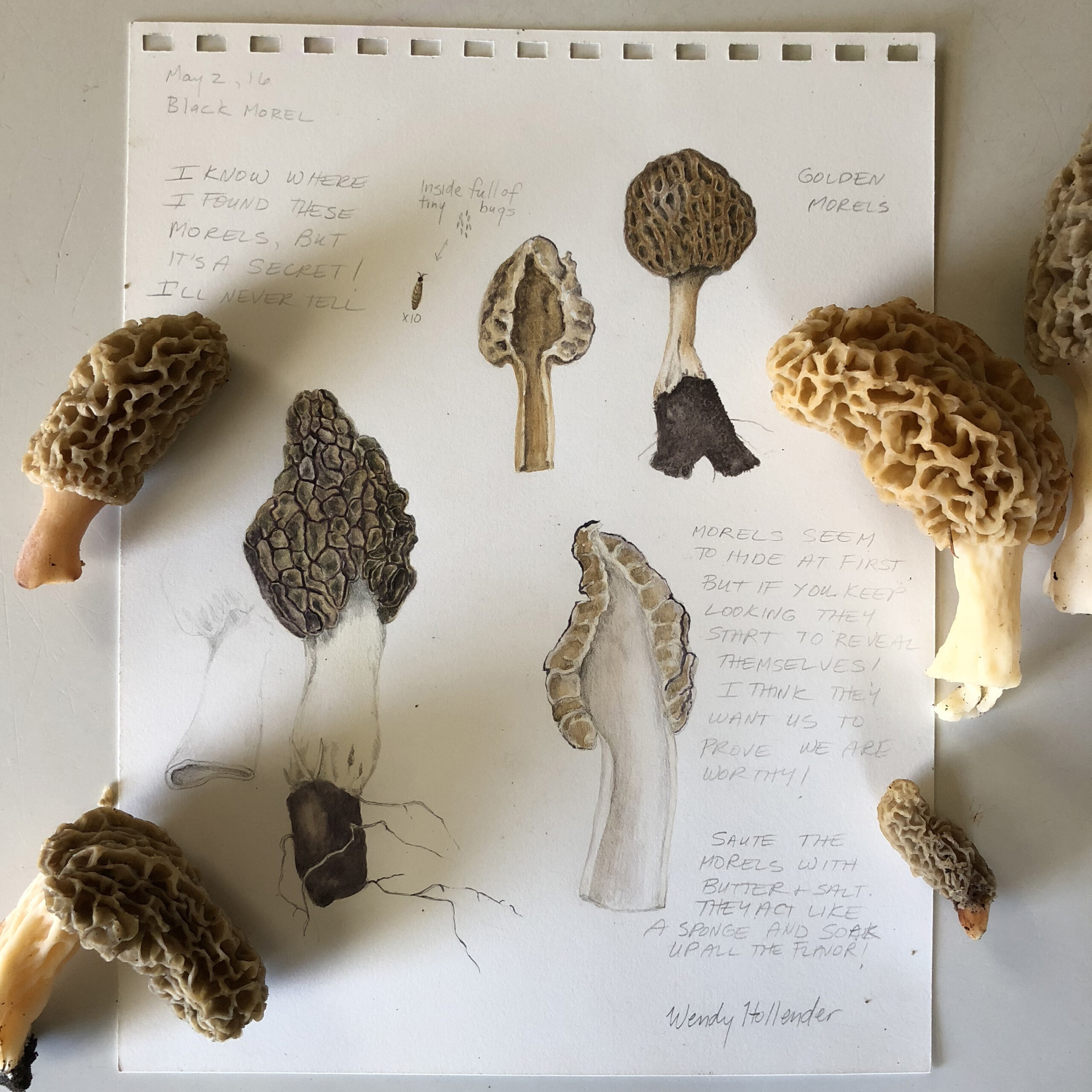
When You Get Home:
+ Draw
Once you gather your subjects and bring them to your drawing table, the fun continues! Keep it small and simple, or challenge yourself to create large compositions with one subject at its different life cycle stages or with several different subjects that you collected from the same place. Set yourself up for success with these free tips.
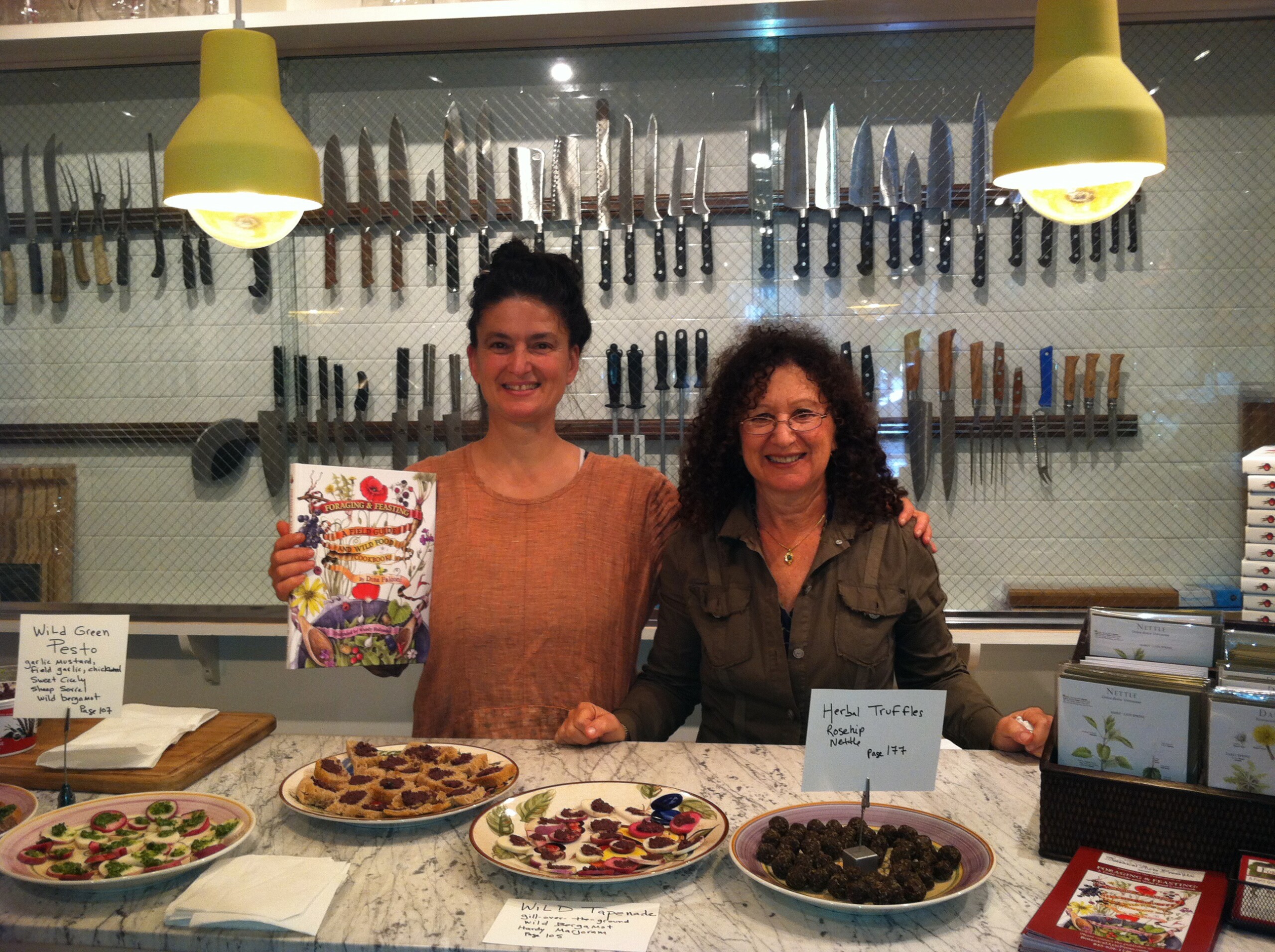
+ Cook
Dina says that “Foraging opens the door to culinary adventures, but really it’s just reconnecting us to our earliest foods.” Check out Foraging & Feasting for delicious and nutritious recipes with ingredients you can find growing in nature.
May you be empowered to forage and to feast in earth-loving ways!


